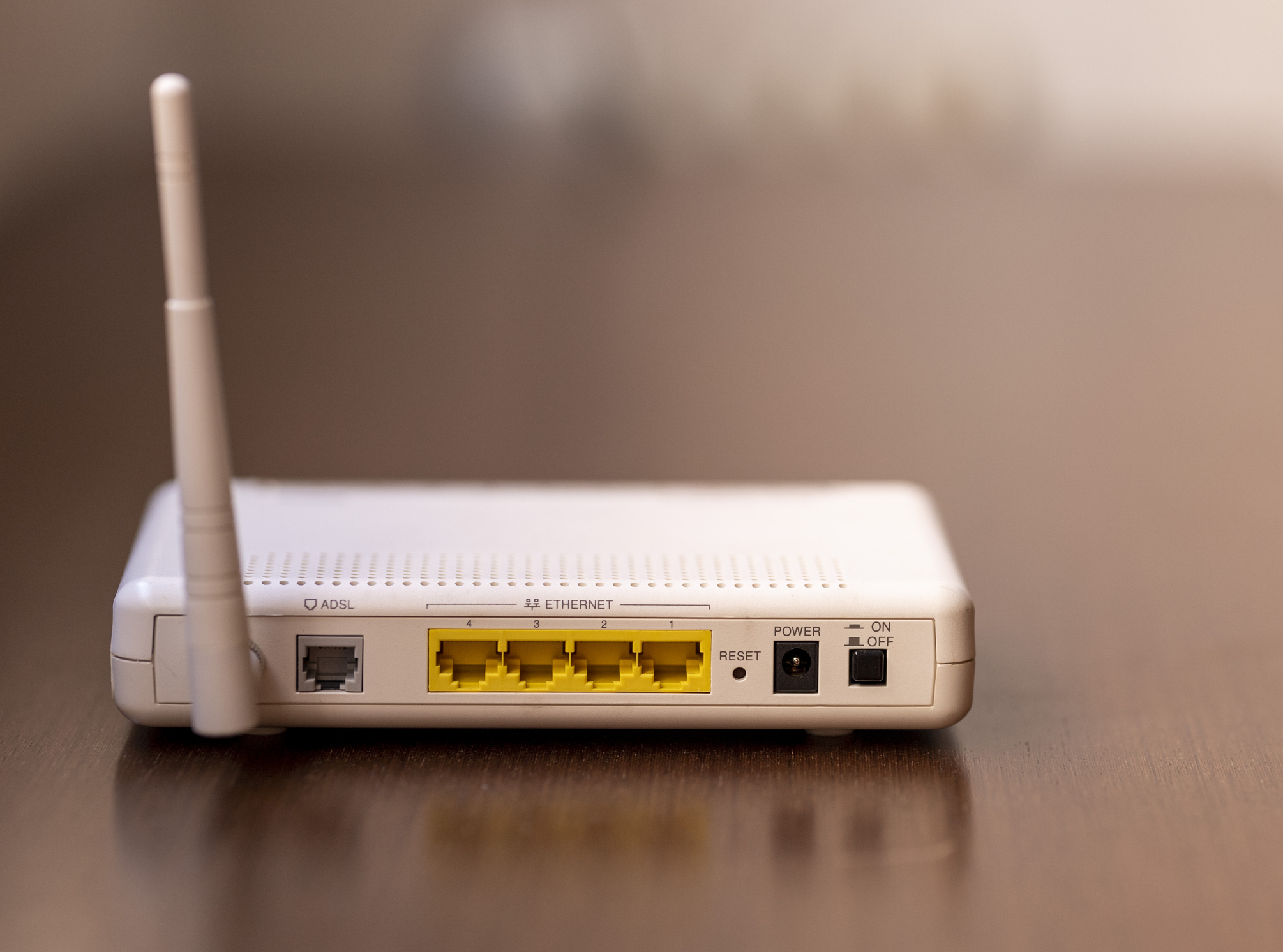What is Bluetooth and how does it work? Everything you need to know
We examine how the different Bluetooth standards compare, and how users can get the most from their Bluetooth devices


Most of us use Bluetooth – perhaps to connect a keyboard and mouse to a computer. It’s a unique technology, similar to Wi-Fi in some ways but with a different topology and a shorter range, intended for personal-area networking (PAN) rather than a whole-home LAN.
Bluetooth was originally the colorful nickname of Harald Gormsson, king of Denmark in the 10th century. The connection between short-range networking and the Danish monarchy isn’t obvious, but the ostensible explanation is that Gormsson united the tribes of Denmark into a single kingdom, and Bluetooth similarly brings a whole range of networking protocols into one standard.
If that sounds like a stretch, it may also have helped that Gormsson’s initials were written as a neat rune that looks like an angular B with a pair of antennae sticking out the side – which became the official Bluetooth logo.
Who invented Bluetooth?
Bluetooth was dreamt up in 1989 at Ericsson Mobile in Sweden, at that time, one of the biggest names in the fast-growing mobile phone industry. CTO Nils Rydbeck had a vision of people talking on hands-free wireless headsets, without having to take their phones out of their pockets, and he tasked company engineers with making it a reality.
By 1997 Ericsson had a simple short-range radio system working in its labs – and with dial-up internet access growing in popularity, IBM happened to be seeking a way to use mobile phones as portable modems for its ThinkPad laptops. IBM and Ericsson agreed to build it together on the nascent Bluetooth platform and opened up the standard to encourage other companies to get involved in its development and promotion. Intel, Nokia, and Toshiba came on board, with the five firms forming the Bluetooth Special Interest Group (SIG).
Since then, Apple and Microsoft have also joined as major contributors, while IBM – having departed the laptop business – has been replaced by Lenovo. More than 35,000 technology companies around the world now participate in the development and certification of new Bluetooth standards.
What’s the difference between Bluetooth and Wi-Fi?
Bluetooth and Wi-Fi both use radio signals to exchange data packets between computers and other devices. However, while Wi-Fi networks are normally managed by a central router, Bluetooth devices pair directly to a single host computer, phone, or tablet. This means Bluetooth networks are generally a lot smaller: while a Wi-Fi router can happily handle more than a hundred connected devices, a Bluetooth host will normally support a maximum of between seven and nine connections.
Sign up today and you will receive a free copy of our Future Focus 2025 report - the leading guidance on AI, cybersecurity and other IT challenges as per 700+ senior executives
READ MORE

Another difference is how the two technologies use the radio spectrum. In the beginning, both Bluetooth and Wi-Fi operated in the 2.4GHz frequency range; since then, Wi-Fi has added dozens of additional channels in the 5GHz and 6GHz ranges, while Bluetooth continues to operate on a tight band of frequencies between 2,402MHz and 2,480MHz.
This isn’t a big problem for Bluetooth. One advantage of using higher frequencies for Wi-Fi is they’re less affected by interference, but Bluetooth minimizes that issue using a technique called adaptive frequency hopping. This works by dividing up the operating spectrum into 79 narrow 1MHz channels (or 40 2MHz channels with the newer LE standard), and automatically switching to a new channel when potential interference is detected.
Wi-Fi can’t do this anything as effectively, because its channels are much wider – they can range between 20MHz and 160MHz – and there’s limited space in the available spectrum to switch to. However, those fatter channels provide much more bandwidth: Wi-Fi 6 can theoretically transfer data at up to 4.8Gbits/sec over a 160MHz channel, while a 1MHz Bluetooth channel can’t go over 3Mbits/sec. So while Bluetooth can provide a more consistent connection than Wi-Fi, it’s overall a more limited, smaller, and slower technology.
What are the advantages of Bluetooth?
Although Bluetooth isn’t as powerful as Wi-Fi, it has certain advantages. One is that it literally consumes less power: most Bluetooth devices have a maximum transmission power of 2.5mW, a mere fraction of the 100mW that’s standard for Wi-Fi devices. This means compact Bluetooth accessories like headphones and watches can run for a day or more off a tiny rechargeable battery. Peripherals such as computer keyboards and mice can use mid-sized batteries and work for months between charges.
Another advantage of Bluetooth is that it makes connecting very simple: devices can be paired by just pressing a button, and optionally entering or confirming a PIN. Admittedly, that’s the same process as using WPS to connect to a Wi-Fi network, but there’s more. When a Bluetooth device connects to a host, it advertises its profile capabilities, telling the host exactly what it can do. The host can then enable those capabilities without requiring any further configuration.
For example, if you connect a Bluetooth mouse to a laptop, the human interface device (HID) profile will instantly enable you to use it to control the mouse pointer. Hook up a loudspeaker and the Advanced Audio Distribution (A2DP) profile lets you start streaming audio right away. Connect a headset to a phone and you’ll immediately be able to use it for calls, along with basic controls such as adjusting the volume and ending calls. There are more than 30 defined Bluetooth profiles, covering a range of services from exchanging data files to working with images and printing documents.
Bluetooth also has certain security advantages over Wi-Fi. For one, the lower transmission power makes it harder for an attacker to spy on Bluetooth transmissions. And new connections can only be made when the devices have been manually put in pairing mode, so an unauthorized person can’t join a Bluetooth network unless someone lets them in, or they get physical access to approve the connection themselves.
What are the future capabilities of Bluetooth?
All Bluetooth hosts and devices are backward-compatible with older standards, and anything you buy today that carries the Bluetooth logo is required to support at least version 4.2 of the standard. That means you can normally expect Bluetooth devices to work together seamlessly, without having to worry about version numbers.
There are however some specific capabilities that you might choose to look out for. In particular, Bluetooth 5.2 supports the new low-energy audio standard. As well as offering improved battery life and sound quality, LE Audio allows an unlimited number of listening devices to connect to one audio source, by simply scanning a QR code or tapping an NFC tag.
This is a major new feature for Bluetooth, and the SIG has given the technology its own brand name – Auracast. A marketing push is planned for later in the year, with a focus on televisions, particularly ones in public places, and assistive technologies such as hearing aids and audio description services.
If that interests you, it’s worth checking the specification before you buy your next Bluetooth device. Bluetooth 5.2 isn’t yet universal, but it’s becoming widespread, and a few devices – including the Apple iPhone 14 and the latest Apple Watch models – have already moved to the very latest Bluetooth 5.3 standard.
As for the future, no concrete information has been released about the upcoming capabilities of Bluetooth 6, or when it might be released. However, in November 2022, the Bluetooth SIG revealed that it was working to extend BLE into the 6GHz frequency range. That suggests an intention to deliver increased bandwidth and lower signal latency – potentially enabling Bluetooth to support rich, real-time VR or AR experiences.
How many versions of Bluetooth are there?
Bluetooth 1 (2001): The original Bluetooth specification provided basic connectivity for voice and data connections. Bluetooth 1.1 followed shortly afterward, containing mostly bugfixes; in 2003, Bluetooth 1.2 added the adaptive frequency hopping technology that helps Bluetooth avoid the worst effects of interference.
Bluetooth 2 (2005): The second major release of Bluetooth introduced the “enhanced data rate” mode (EDR), raising maximum connection speeds from 721kbits/sec to 2.1Mbits/sec. Soon afterward, Bluetooth 2.1 added easy pairing, permitting devices such as headphones to pair with no user confirmation, or by simply tapping to confirm the connection.
Bluetooth 3 (2009): Bluetooth 3 massively increased the performance potential of Bluetooth with a new high-speed (HS) data-transfer mode supporting speeds of up to 24Mbits/sec. This was a bit of a cheat, though, as the high-speed channel used a separate Wi-Fi-type radio, increasing the size, cost, and power consumption of the whole module. For these reasons, HS was defined as an optional extra capability and was never widely implemented – although it’s still officially supported today, under the “Bluetooth+HS” brand.
Bluetooth 4 (2010): The fourth-generation Bluetooth standard brought the biggest update the technology has seen: a new “low-energy” mode known as Bluetooth LE, or just BLE. When used with compatible devices, this slashed power consumption, in exchange for reduced bandwidth – as low as 125kbits/sec for devices wanting to achieve the best battery life.
Three years later, Bluetooth 4.1 increased efficiency further by allowing devices to manage their own power states and enabling them to talk directly to one another, rather than having to communicate via the host. Bluetooth 4.2 made it possible to use Bluetooth over IPv6, rather than relying on native radio hardware – the intention being to allow IoT devices to use Bluetooth technologies over the internet or a LAN connection.
Bluetooth 5 (2016): The most recent major version of Bluetooth upgraded the performance of BLE, allowing data bursts of up to 2Mbits/sec within the low-power envelope, with. Alternatively, LE devices using Bluetooth 5 can establish longer-range connections at lower bitrates, making Bluetooth more viable as a platform for smart home appliances.
Bluetooth 5.1 (2019): The next version of Bluetooth 5 continued to focus on range, with a new mesh connection mode that allows multi-hop connections to a host. We haven’t seen any real-world products that use this capability so far, but it could allow the personal area network to extend across a whole living space or office. A new angle-of-arrival feature was also added, allowing Bluetooth devices to detect the direction of incoming signals from paired devices, and hence perform basic location tracking.
Bluetooth 5.2 (2019): Bluetooth 5.2 was a significant update, introducing the new LE Audio profile which promises higher-quality audio streaming with less power drain (see opposite). LE Audio also includes the Auracast protocol, which allows a Bluetooth audio source to broadcast to an unlimited number of headphones or loudspeakers.
Bluetooth 5.3 (2021): The very latest Bluetooth release enables faster switching between performance modes, so Bluetooth devices can sleep when they’re not in use, then “wake up” almost instantly as needed. Bluetooth 5.3 devices can also detect radio interference and choose for themselves which radio channels to use – an improvement on the previous standard, where frequency hopping was managed solely by the host.
Darien began his IT career in the 1990s as a systems engineer, later becoming an IT project manager. His formative experiences included upgrading a major multinational from token-ring networking to Ethernet, and migrating a travelling sales force from Windows 3.1 to Windows 95.
He subsequently spent some years acting as a one-man IT department for a small publishing company, before moving into journalism himself. He is now a regular contributor to IT Pro, specialising in networking and security, and serves as associate editor of PC Pro magazine with particular responsibility for business reviews and features.
You can email Darien at darien@pcpro.co.uk, or follow him on Twitter at @dariengs.
-
 Trump's AI executive order could leave US in a 'regulatory vacuum'
Trump's AI executive order could leave US in a 'regulatory vacuum'News Citing a "patchwork of 50 different regulatory regimes" and "ideological bias", President Trump wants rules to be set at a federal level
-
 TPUs: Google's home advantage
TPUs: Google's home advantageITPro Podcast How does TPU v7 stack up against Nvidia's latest chips – and can Google scale AI using only its own supply?
